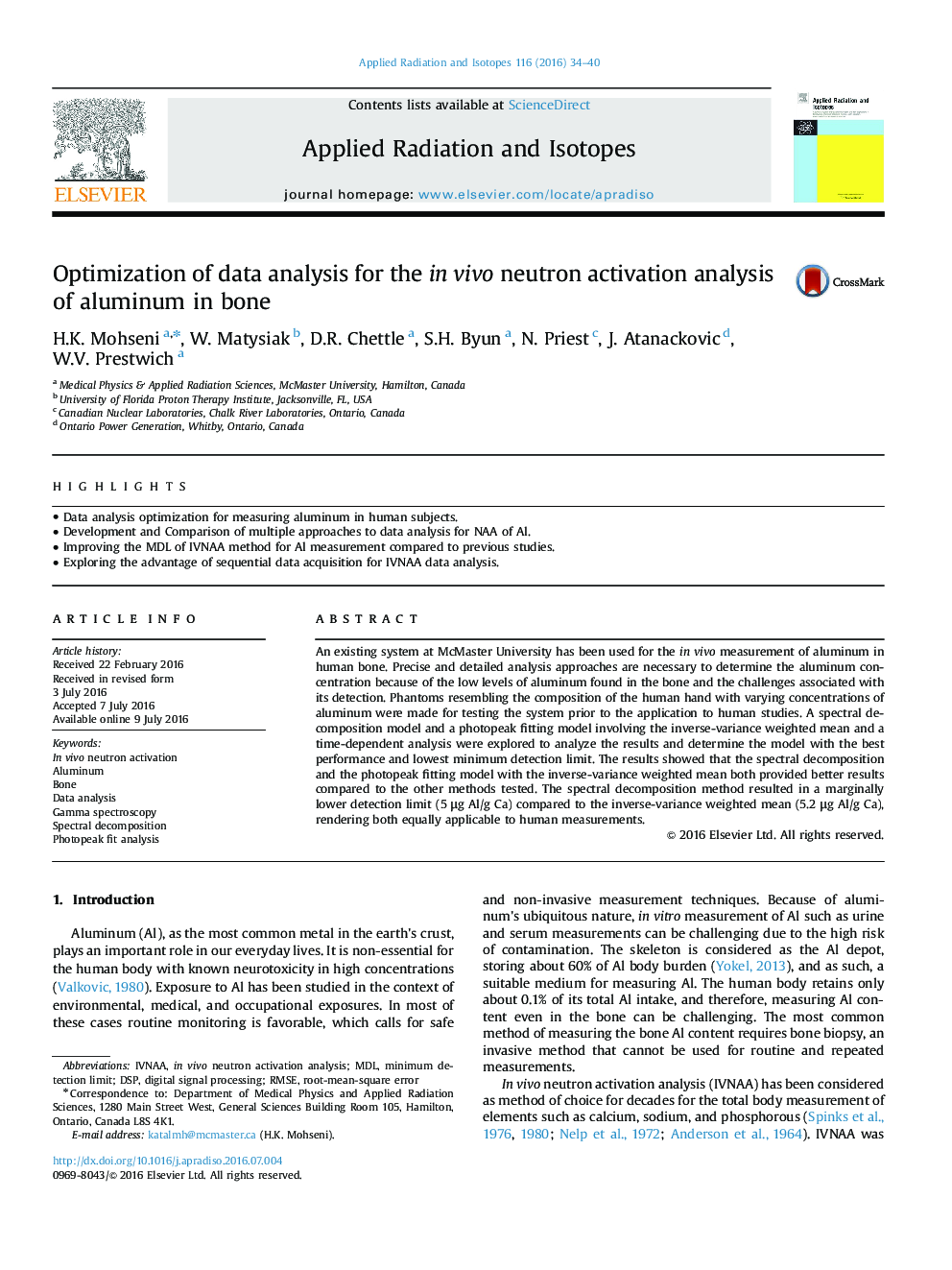| Article ID | Journal | Published Year | Pages | File Type |
|---|---|---|---|---|
| 8209001 | Applied Radiation and Isotopes | 2016 | 7 Pages |
Abstract
An existing system at McMaster University has been used for the in vivo measurement of aluminum in human bone. Precise and detailed analysis approaches are necessary to determine the aluminum concentration because of the low levels of aluminum found in the bone and the challenges associated with its detection. Phantoms resembling the composition of the human hand with varying concentrations of aluminum were made for testing the system prior to the application to human studies. A spectral decomposition model and a photopeak fitting model involving the inverse-variance weighted mean and a time-dependent analysis were explored to analyze the results and determine the model with the best performance and lowest minimum detection limit. The results showed that the spectral decomposition and the photopeak fitting model with the inverse-variance weighted mean both provided better results compared to the other methods tested. The spectral decomposition method resulted in a marginally lower detection limit (5 μg Al/g Ca) compared to the inverse-variance weighted mean (5.2 μg Al/g Ca), rendering both equally applicable to human measurements.
Keywords
Related Topics
Physical Sciences and Engineering
Physics and Astronomy
Radiation
Authors
H.K. Mohseni, W. Matysiak, D.R. Chettle, S.H. Byun, N. Priest, J. Atanackovic, W.V. Prestwich,
